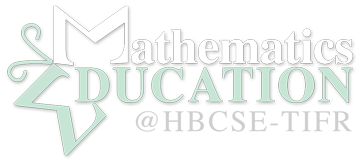Home › Forums › Primary School Mathematics Education › Describe the tradeoff between precision and recall.
- This topic is empty.
-
AuthorPosts
-
-
mandeep
Guest<p>In the field of machine learning and analysis of data accuracy and recall are two key indicators of the effectiveness of the model. These metrics play an essential part in evaluating the performance of classification algorithms. They provide insight into whether the model can effectively identify relevant instances. However, recall and precision are often in a tense balance, as the improvement of one measure could negatively impact the other. In this article, we explore the complexities of recall and precision by examining their definitions, importance, and the inevitable dilemma that practitioners have to navigate. Data Science Training in Pune</p><p>Understanding Precision and Recall:</p><p>Recall and precision are two of the metrics that are used to assess the performance in binary models for classification. When dealing with a binary classification issue the data is split into two groups – both negative and positive. The precision and recall are determined by analyzing the results of the model’s predictions.</p><p>Precision The term Precision, which is also referred to by the term positive predictive value determines the precision of predictions that are positive by models. It is the ratio of accurate positive forecasts to the overall amount of positive predictions generated through the models.<br />A high level of precision suggests that if the model predicts a positive event it will likely be accurate. However, a high accuracy cannot guarantee that all positive cases were correctly identified.</p><p>Recall The term “recall,” also referred to as the sensitivity rate or the real positive rate is the capacity of a model to identify every positive event that is relevant. It is the ratio of real positive forecasts to the total number of positive instances.<br />A high recall indicates that this model has been successful in identifying the most positive cases. However, the fact that a model has a high recall doesn’t assure any positive prediction generated from the models is true.</p><p>The Precision-Recall Tradeoff:</p><p>The balance between recall and precision arises from the tension inherent in making accurate predictions while capturing the most positive examples feasible.</p><p>Prioritization of Precision: When precision is emphasized this model is likely to make more negative predictions, but the predictions are likely to be accurate. This method of reducing false positives makes the model appropriate for scenarios in which the price for false positives can be high, for instance for medical diagnosis and fraud prevention.<br />Focus on Recall On The other side when recall is emphasized by the model, it aims to identify as many positive examples as possible, even if it comes at the expense of incorporating false positives. This method is appropriate in situations where the loss of positive cases is more expensive than excluding false positives. This is the case, for example, when conducting search and rescue or disease screening.<br />Real-world Implications:</p><p>The tradeoff between precision and recall can have real-world consequences across a variety of fields, which affect decision-making processes as well as the suitability of models to be used in specific situations. Data Science Training in Pune</p><p>Medical Diagnosis: For diagnostic medical procedures, the focus is usually on recall to make sure that every possible instance of a disease is detected. However, accuracy is vital to avoid unnecessary treatment or treatments. Finding the appropriate balance is crucial for ensuring accurate diagnosis and the right medical treatment.<br />Fraud Detection: In the field of fraud detection, precision is often emphasized to limit false positives. Incorrectly labeling authentic transactions to be fraudulent could result in inconvenience for the user. However, attaining high accuracy can result in a misreading of real-life cases of fraudulent transactions. Recall and precision are crucial in the design of an efficient system for detecting fraud.<br />Information Retrieval: When it comes to information retrieval tasks such as Google, the ability to recall information is usually placed at the top of the list to ensure that users can find relevant information. But, maintaining a certain level of precision is required to provide users with precise and reliable results. Search algorithms have to find a way to balance the need for an enjoyable user experience.<br />Strategies to Navigate the Tradeoff:</p><p>To achieve the best balance between recall and precision requires thoughtfully implementing strategies, and focusing on the specific needs of the job in hand.</p><p>Threshold Adjustment: in many classification models, predictions are determined by a threshold for probability. Adjusting this threshold, researchers can alter the balance between recall and precision. A higher threshold can increase accuracy but could reduce recall, whereas a lower threshold can have the opposite effect.<br />Ensemble methods: These strategies include combining the predictions of several models, and can be used to reduce the tradeoff between precision and recall. By taking advantage of the strengths of various models, the methods of ensemble seek to boost overall performance, and also achieve a more balanced balance between recall and precision.<br />Domain-specific considerations: Understanding the effects of false positives as well as false negatives within a particular domain is vital. The ability to tailor the model’s behavior based on the negative consequences of misclassifications will help to align the precision-recall tradeoff to the actual requirements that the software. Data Science Course in Pune<br />Conclusion:</p><p>The tradeoff between precision and recall is a complex issue in the area of machine learning and data analysis. Making the right tradeoff between generating precise positive predictions and recording the most positive examples feasible is crucial to developing efficient and practical models. Through understanding the implications of recall and precision in various fields and employing strategic methods to navigate this dilemma and create models that satisfy the particular needs of their respective applications. As technology continues to improve as well as the continuous exploration of ways to increase precision and recall is an evolving and dynamic part of the world of data science.</p>
-
-
AuthorPosts
